Maxcraft has long argued the importance and overall economic benefits of replacing traditional gyro instruments with solid state glass panels in training aircraft. Together with Upper Valley Aviation based in Chilliwack, we rebuilt two iconic training aircraft, a Cessna 152 and 172 which are destined to soon provide a platform to teach the next generation of pilots in Alaska.
Training Aircraft Get Modern Upgrades
1984 Cessna 172P & 1977 Cessna 152

Aircraft & Owner:
The Cessna 172 is the most produced aircraft in the world and is often the first airplane people think of when they think general aviation or flight training. Along with the slightly smaller Cessna 152, if you ask almost any pilot what plane they first learned to fly, chances are it will be one of those two. Although the Cessna 152 was only produced for a short eight years nearly four decades ago, it continues to be one of the best training aircraft available both economically and in terms of handling. Our customer is a well-established flight school in the Arizona, as they recently opened their second training base in Anchorage, Alaska, these two aircraft are required to meet the new demands for flight training in Alaska.
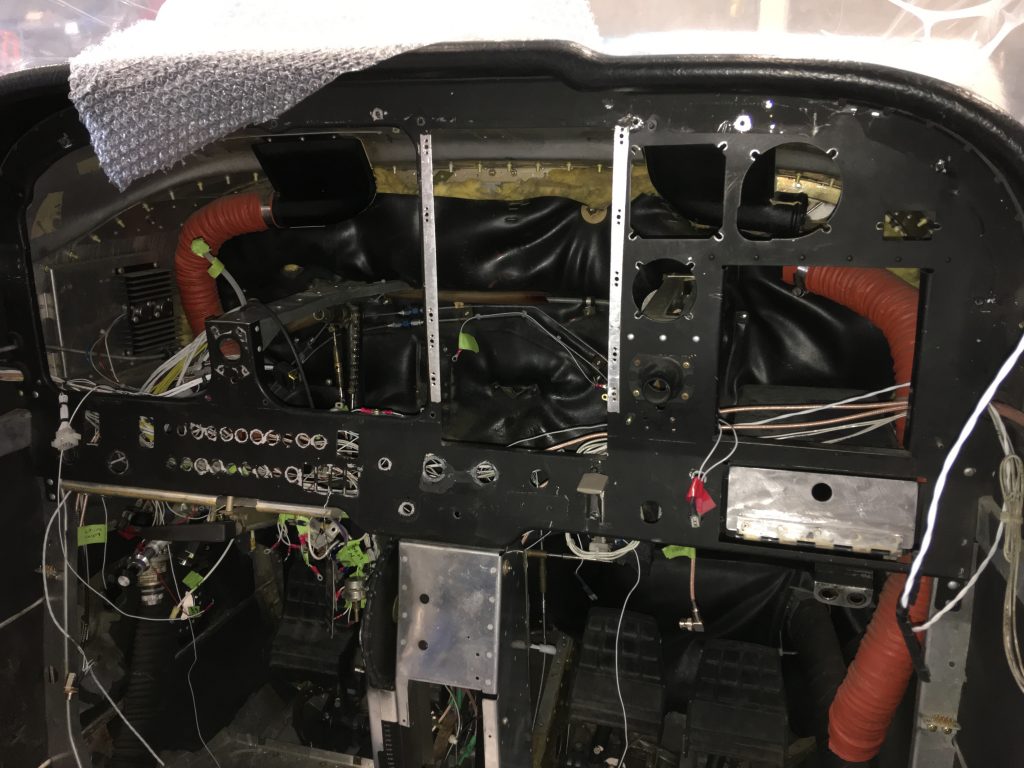
Need:
Both the 172 and 152 were not in the best of condition, they were completely disassembled before being placing on a truck and sent to the Lower Mainland where work was split between our hangar in Pitt Meadows, and Upper Valley Aviation in Chilliwack.
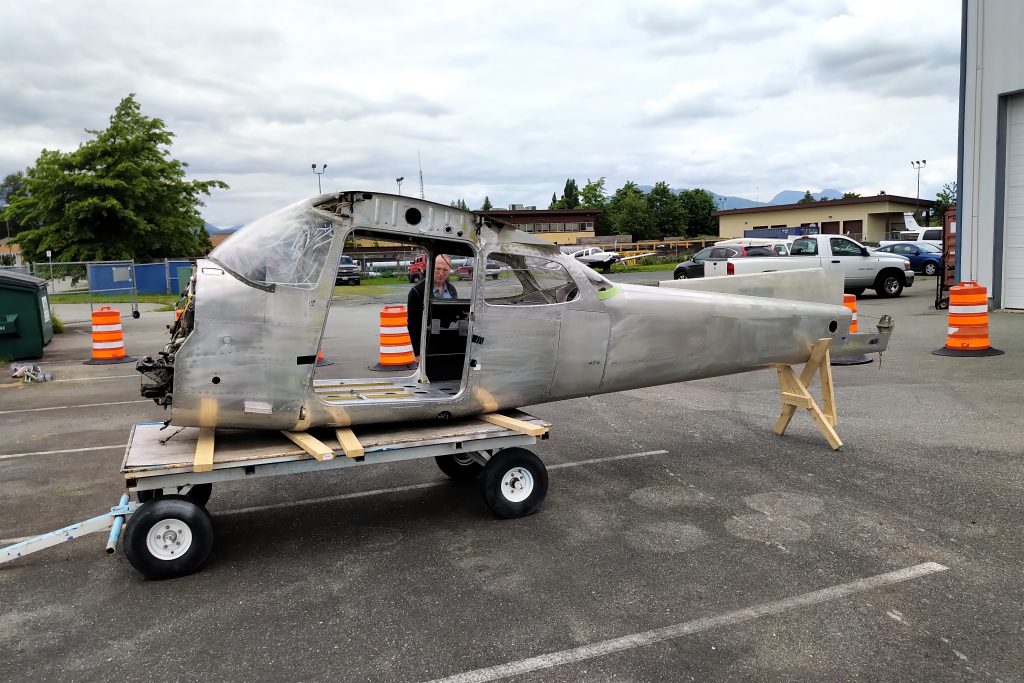
With both aircraft requiring complete overhauls, including avionics, powerplant, interior, structural, and paint. At the end of this project the aircraft will leave ready for many decades of training flights. On the avionics side of things, the plan was to equip the Cessna 172 with some of the most advanced avionics available in order to make it an ideal instrument flight rules (IFR) training aircraft, as well as a steppingstone to assist student pilots transition to more advanced airframes. Contrastingly, the Cessna 152 was to be much simpler making it more suitable for initial pilot training.
NEW EQUIPMENT LIST Cessna 172
| G500 TXi GDU 1060 | Integrated Flight Display with SVT (Garmin) |
| GI 275 | Backup Electronic Flight Instrument (Garmin) |
| GMA 345 | Digital Audio Panel (Garmin) |
| GTN 750 Xi | Touchscreen Flight Navigator and Multifunction Display (Garmin) |
| FlightStream 510 | Wireless Cockpit Connectivity (Garmin) |
| GNC 255 | VHF Communications and Navigation Transceiver (Garmin) |
| GTX 345 | ADS-B “In”/”Out” Transponder (Garmin) |
| ELT 345 | 406mhz Emergency Locator Transmitter (Artex) |
| MD 93 | Digital Clock & USB Charger (Mid-Continent) |
| GSB 15 | USB Charging Ports (Garmin) |
| GEA 110 | Engine Monitoring System Integrated with TXi (Garmin) |
| Telex 100 | Auxiliary Hand Microphone (Telex) |
| MaxPanel | Custom Cut and Powder Coated Instrument Panel (Maxcraft) |
| MaxPanel | Customer Cut and Powder Coated Lower Switch Panel (Maxcraft) |
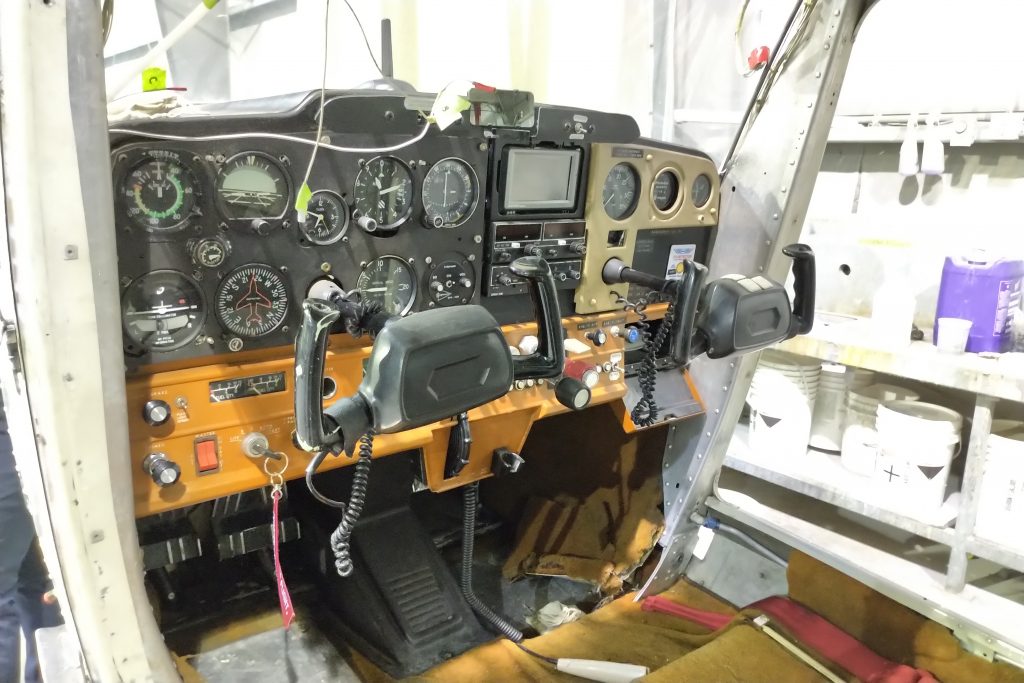
NEW EQUIPMENT LIST Cessna 152
| GI 275 | Electronic Flight Instrument, Attitude Indicator (Garmin) |
| GI 275 | Electronic Flight Instrument, Horizontal Situation Indicator (Garmin) |
| GI 275 | Electronic Flight Instrument, Engine Indication System (Garmin) |
| GMA 345 | Digital Audio Panel (Garmin) |
| GTN 650Xi | Touchscreen Flight Navigator and Multifunction Display (Garmin) |
| FlightStream 510 | Wireless Cockpit Connectivity (Garmin) |
| GNC 255 | VHF Communications and Navigation Transceiver (Garmin) |
| ELT 345 | 406mhz Emergency Locator Transmitter (Artex) |
| MD 93 | Digital Clock & USB Charger (Mid-Continent) |
| GTX 345 | ADS-B “In”/”Out” Transponder (Garmin) |
| Telex 100 | Auxiliary Hand Microphone (Telex) |
| MaxPanel | Custom Cut and Powder Coated Instrument Panel (Maxcraft) |
| MaxPanel | Customer Cut and Powder Coated Lower Switch Panel (Maxcraft) |
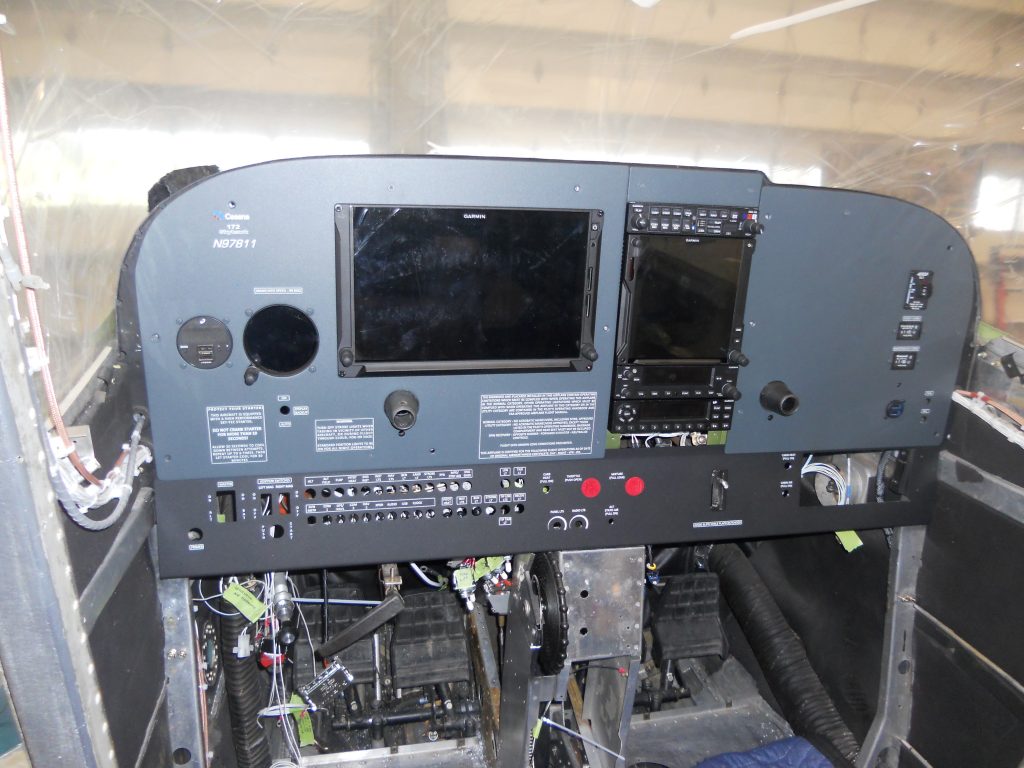
Maxcraft Solution:
The Similarities:
Although these two panels may look quite different, much of the core avionics stack is very similar, or identical. In both aircraft, you’ll find the Garmin GMA 345 digital audio panel. The GMA 345 will provide the pilots with all of their audio, including intercom between passengers, and interfacing with the various systems and radios.
The GNC 255 is a simple digital nav/com. On both the 172 and 152 the GNC 255 will act as a secondary nav/com augmenting, and also acting as a backup to the main nav/com which will be the GTN. Some pilots choose to utilize both radios to have multiple frequencies lined up between the two, while other choose to rely entirely on one, while leaving the other monitoring a traffic frequency, 121.5, or standing by on their local airports ATIS frequency.
As these aircraft are almost exclusively going to fly in U.S. airspace, an ADS-B transponder was a must. Garmin’s GTX 345 has been one of the most popular options for ADS-B compliance. Along with transmitting the required ADS-B “Out” signals, the GTX 345 also acts as an ADS-B receiver collecting information from both ground stations, and other aircraft within range which can then be displayed on a compatible device, such as a GTN navigator, or G500 primary flight display.
The GTN navigator in each aircraft will also be equipped with Garmin’s FlightStream 510, which allows for a wide variety of wireless transfers between the Garmin displays and a compatible smartphone or tablet. The FlightStream’s most notable feature is the ability to wirelessly transfer flight plans from an app such as ForeFlight, or Garmin Pilot to the GPS navigator in the aircraft, eliminating the need to manually enter waypoints before the flight. The FlightSteam 510 can also forward ADS-B data from the GTX 345 to either of the aforementioned apps allowing pilots to display traffic on their mobile devices.
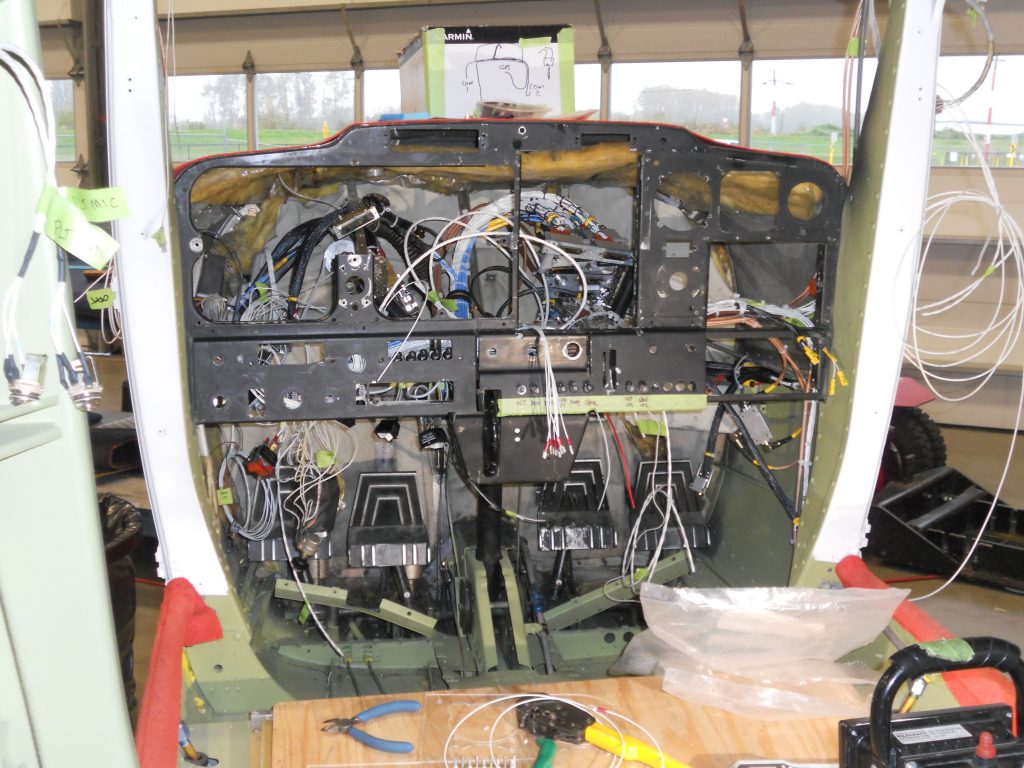
Since both aircraft as going to be flying in Alaska, where the terrain can be extremely unforgiving year-round, we installed the ELT 345 emergency locator transmitter (ELT). This ELT is lightweight, and when activated will transmit on both 121.5mhz and 406mhz. The 406mhz signal will be received by a network of satellites which will then notify search and rescue crews of the aircraft’s registration, and location of the transmission allowing them to shorten response times dramatically when compared to direction finding an analog ELT signal. The ELT can we activated manually by using the panel mounted remote switch or switch located on the ELT itself, or if the G-Sensor in the ELT senses an impact it will automatically activate.
The MD93 digital clock and USB charger from MidContinent may seem like a minor consideration in the grand scheme of things, however the convenience it offers the pilot can very quickly justify it’s installation. The clock portion can display local time, zulu time, as well as a variety of timer functions such as a flight timer, countdown, and stopwatch. The two high power USB charging ports provide up to 3 amps of power per port to keep devices such as smartphones and tablets fully charged, even on the longest of flights, or long workdays for instructors with multiple back-to-back flights with no time in between to charge their devices. With more and more student pilots learning with tablets, USB charging is becoming more and more important in trainers.
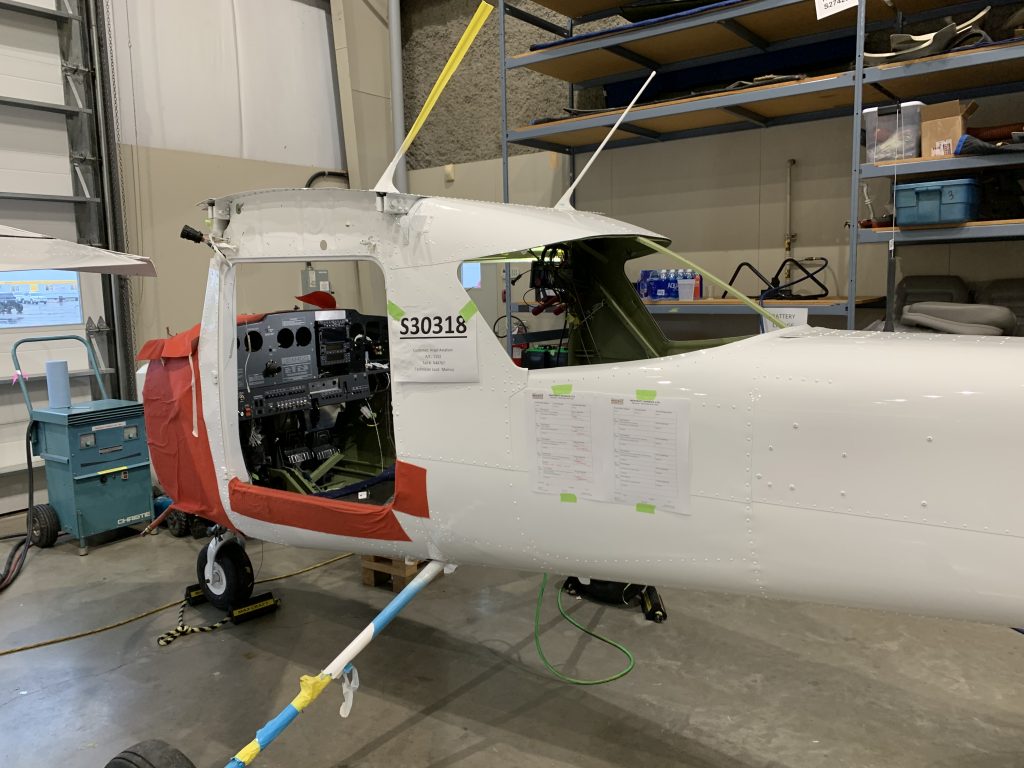
As both aircraft were being completely overhauled, we decided to go all out with our MaxPanel. This included custom designing both the main instrument panels, and the lower switch panels to give them a uniform appearance that is significantly more appealing than the standard bright plastic from the factory. By replacing the plastic panels with all aluminum panels with a strong powder coated finish, they will last significantly longer. The plastic panels often become cracked from a combination of sun exposure, and the harsh conditions they get exposed to in a flight training environment. Our MaxPanels will be able to stand up many years of abuse.
The GTN Xi series of touchscreen multifunction avionics platform is one of Garmin’s premier options for general aviation aircraft. The GTN is available in two form factors, a 4.9” GTN 650Xi, and the larger 6.9” GTN 750Xi. Both share many of the same features. Both have built in navigation, communication, and GPS transceivers. Both integrate with the transponder allowing the pilot to control most functions directly on the touchscreen. Both GTNs also offer all the features pilots have come to expect from GPS navigators, including easy route planning, either directly with the touchscreen, or via a compatible smartphone or tablet app.
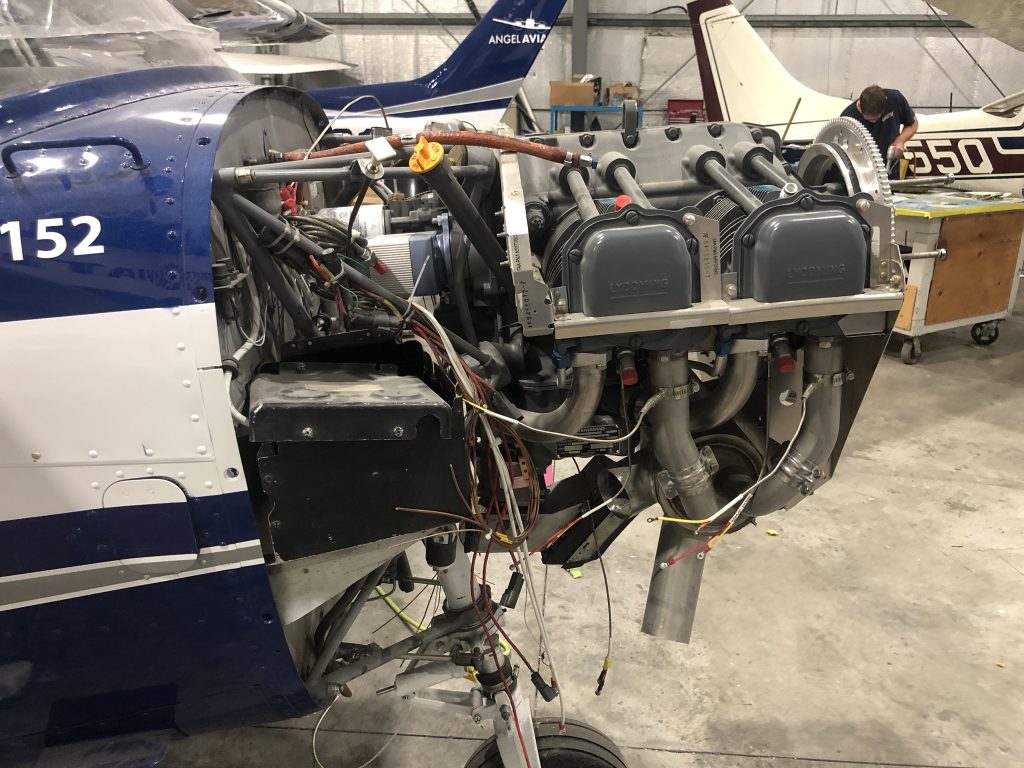
While the GI 275 electronic flight instrument is found in both the 172 and 152, they will serve very different purposes. The 172 is equipped with a single GI 275 located on the left-hand side of the primary flight display (PFD), whereas the 152 has 3 GI 275s mounted front and center on the panel. As the pilot will mainly use the G500 PFD in the 172, in the 152 the first GI 275 will be the pilot’s main source for attitude, altitude, airspeed, and heading. The second GI 275 will act as a navigation instrument by integrating with the GTN 650Xi to display with vertical and lateral GPS/VOR/LOC course deviation cues. The third and final GI 275 in the 152 will display engine indication information, such as fuel, electrical, cylinder temperatures, manifold pressure, and RPM. All this information is contained in an easy to read and glance at format.
Unique to the Cessna 172:
The one thing that makes the 172 immediately standout when compared to the 152 is the large 10.6” touch screen primary flight display. The Garmin G500 TXi is one of the most advanced flight display solutions available for general aviation aircraft. Combining the functions of all the traditional instruments into one easy to digest digital display, the G500 TXi can also be split into two virtual screens, with the PFD on one side, and a multifunction display on the other, allowing the pilot to display charts, traffic, approach plates, and dozens of other information screens directly in their line of sight. The GEA 110 from Garmin is an engine indication system processing unit. When paired with a G500 TXi, the GEA 110 will feed data to the primary flight display where all the vital engine information will be displayed on a small strip on one edge of the display. Should an unsafe engine condition be detected, the G500 will automatically notify the pilot by flashing warning messages on the PFD allowing them to take corrective action. All engine data is also recorded to allow for post flight reviews by flight crew, or maintenance personnel.
The Story:
We weren’t alone in this monumental project, we teamed up Upper Valley Aviation in Chilliwack, a member of our Trusted Affiliate Network to provide Angel Aviation a one stop, turn-key solution for the overhaul of their two training aircraft. While we managed the avionics side of this project, Upper Valley Aviation took on the monumental task of planning and completing the structural work, paint, engine maintenance, and interior refinishing. As our facilities are located at different airports, we coordinated for the aircraft to be transported to Maxcraft’s hangar for us to complete a bulk of the wiring and equipment installation. Once a majority of the work was complete, the aircraft were returned to Upper Valley Aviation and any remaining avionics work was completed by our technicians at their facility.
At the time of writing this project, the aircraft are just being finished up at Upper Valley Aviation before they make the trip up to Alaska to become training workhorses.


